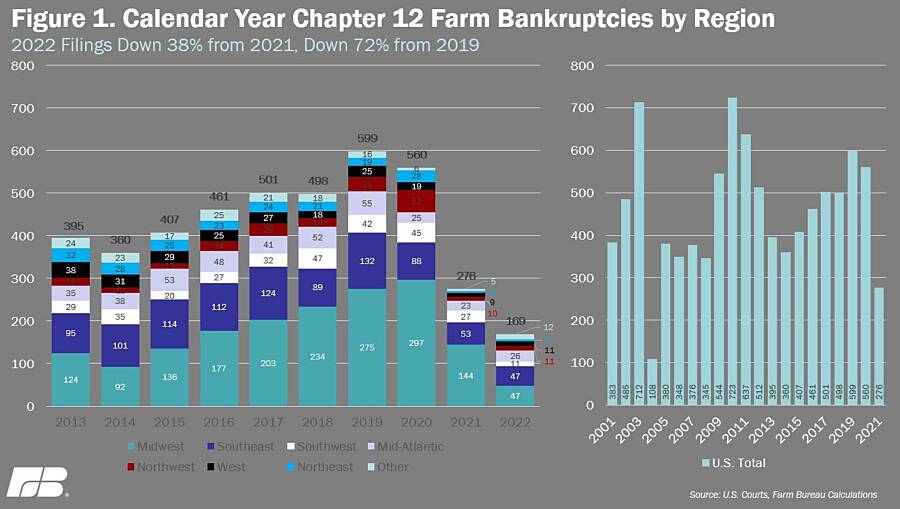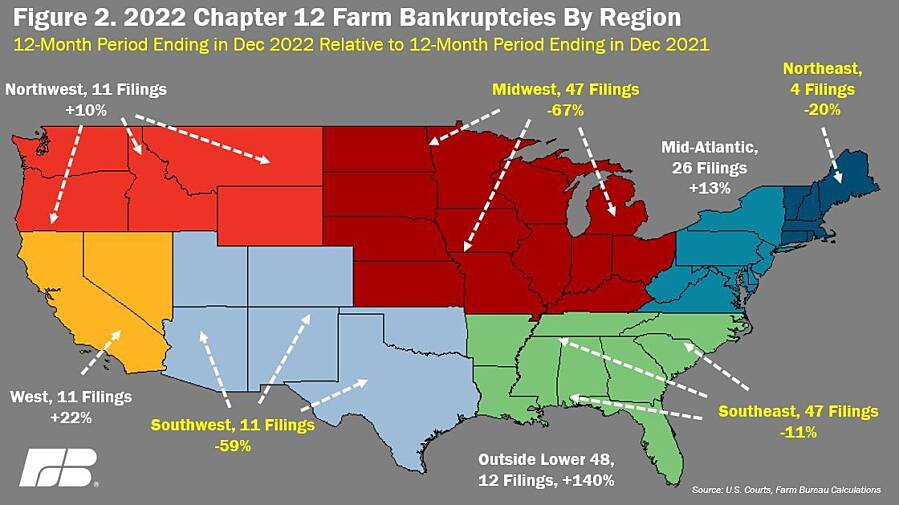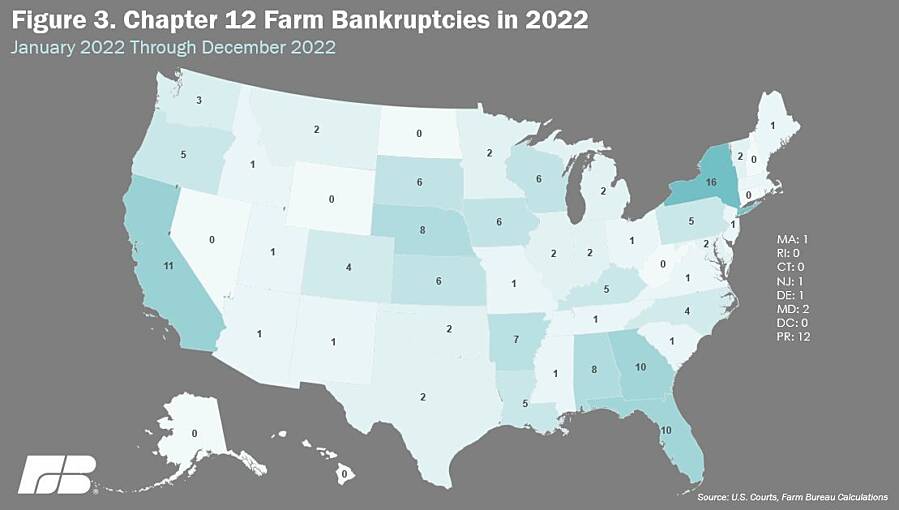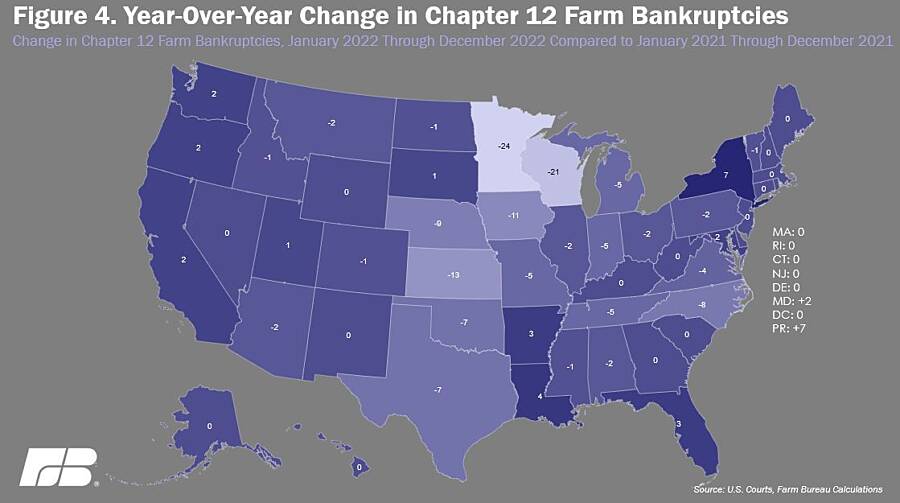Farm Bankruptcies Fall Again in 2022
Veronica Nigh
Senior Economist
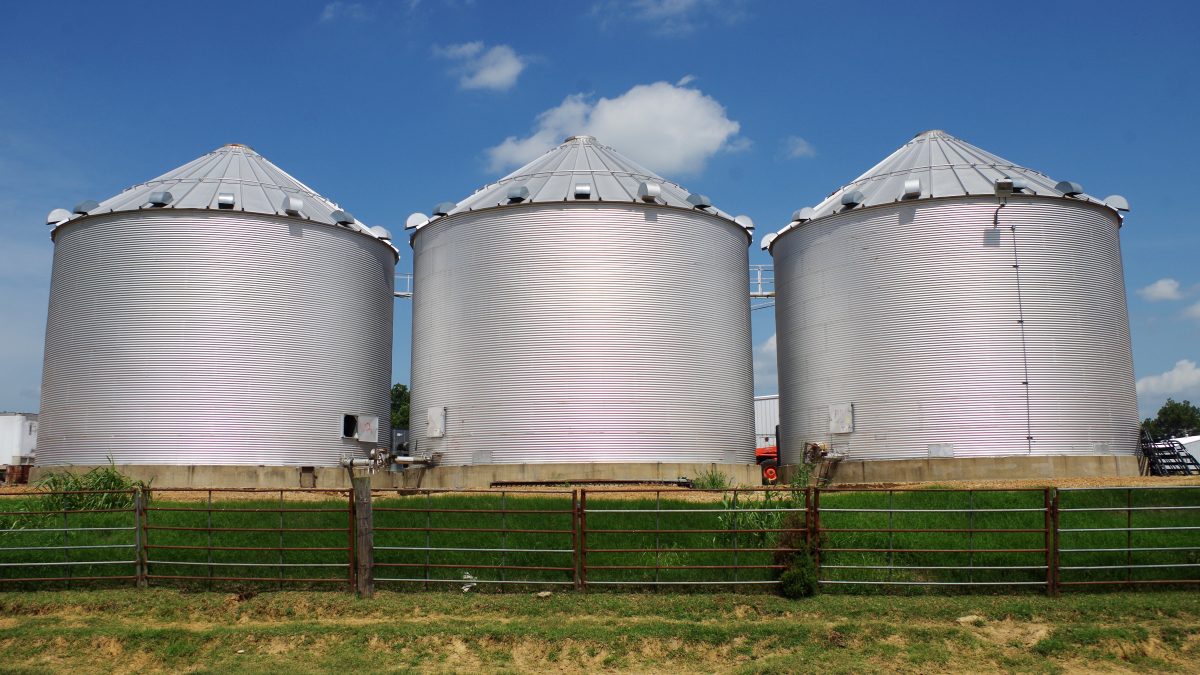
photo credit: Arkansas Farm Bureau, used with permission.
Veronica Nigh
Senior Economist
Chapter 12 was introduced in bankruptcy law as a temporary measure in 1986 and became permanent in 2005. With 169 filings, farm bankruptcies in 2022 were the lowest since Chapter 12 became permanent in 2005. This comes just three years after the third-highest number of farm bankruptcy filings - 595 in 2019. According to data from the U.S. Courts, Chapter 12 bankruptcy filings were down nearly 39% from 2021. This is the first time since Chapter 12 became permanent that there were fewer than 200 filings.
Chapter 12 Bankruptcies by Region
Despite the overall drop in Chapter 12 bankruptcy filings in 2022, filings were not down in every region in 2022, like they were in 2021. In fact, of the eight regions, four – the Mid-Atlantic, West, Northwest and Other – saw double-digit percentage increases in filings. But before we dig into the regions with an increase, let us celebrate the regions with declining numbers. The region with both the largest decrease in Chapter 12 filings by absolute number and the largest percentage decline was the Midwest – Iowa, Illinois, Indiana, Kansas, Kentucky, Michigan, Minnesota, Missouri, North Dakota, Nebraska, Ohio, South Dakota and Wisconsin – which had 47 bankruptcy filings in 2022, down from 144 filings in 2021 – a decrease of 97 filings. The Midwest and the Southeast led all regions in the number of filings, each accounting for 28% of all Chapter 12 filings in the U.S.
The three other regions with a decline in the number of filings in 2022, relative to 2021 include the Southeast, Southwest and Northeast. While the Southeast remains a top region for Chapter 12 bankruptcies, the region saw an 11% reduction in total filings, with 47 in 2022. The Southwest had the second-largest decrease in filings, both in absolute terms and by percentage. In 2022, there were 11 Chapter 12 filings, down from 27 in 2021, a decline of 59%. Finally, the Northeast had four filings in 2022, relative to the five filings in 2021.
Now to the less favorable stats. Four regions had increases in Chapter 12 filings in 2022. The region with the largest increase in Chapter 12 filings by absolute number and percentage increase with 12 filings, up from 5 in 2021, was the Other region, which includes Puerto Rico, Alaska, Hawaii, Guam, the Virgin Islands and the District of Columbia. The Mid-Atlantic (Delaware, Maryland, New Jersey, New York, Pennsylvania, Virginia and West Virginia) had an increase of three filings for a total of 26 filings in 2022. The West (California and Nevada) had 11 filings in 2022, up two from 2021. Finally, the Northwest (Idaho, Montana, Wyoming, Oregon and Washington) also had 11 filings in 2022, up one from 2021.
Region Chapter 12 Bankruptcies by State
Total bankruptcies filed by state vary significantly, from no bankruptcies in 12 states/territories to as many as 16 filings in others, as shown in Figure 2. Alaska, Connecticut, the District of Columbia, Guam, Hawaii, North Dakota, New Hampshire, Nevada, Rhode Island, the Virgin Islands, West Virginia and Wyoming had no Chapter 12 bankruptcies filed in the past year. In contrast, five states had Chapter 12 filings in the double digits. New York (16) and Puerto Rico (12) led the nation in Chapter 12 filings in 2022. Florida and Georgia both had 10 filings and California had 11 filings. It is worth noting that 2022 is the first year that Wisconsin has not led the nation in Chapter 12 filings since it earned that terrible distinction in 2016.
As seen in Figure 4, in 2022 total bankruptcy filings were either down or unchanged from 2021 in most – nearly 80% - states and territories. Filings were down in 24 states and 19 states had no change in the number of filings between 2022 and 2021. Bucking the overall trend, 11 states/territories had an increase in the number of filings – New York (16 up from nine), Puerto Rico (12 up from five), Arkansas (seven up from four), California (11 up from nine), Florida (10 up from seven), Louisiana (five up from one), Maryland (two up from zero), Oregon (five up from three), South Dakota (six up from five), Utah (one up from zero) and Washington (three up from one).
Summary
Overall, in 2022, USDA reports that there were 2,002,700 farms in the U.S., which was down from 2,012,050 in 2021, a loss of 9,350 farms. Chapter 12 farm bankruptcies fell below 200 for the first time and reached the lowest level since the Chapter 12 program was made permanent in 2005. 2022’s 169 farm bankruptcies are over 70% lower than the 599 farm bankruptcies of 2019, just three years before. It is no coincidence that farm bankruptcies in 2019 were higher than in 2022: USDA estimated 2019’s net farm income, a broad measure of farm profitability, of $79 billion was less than half of the 2022 net farm income estimate of $163 billion. So, while we cheer the second year of declining Chapter 12 filings, we also must keep an eye on the future. USDA’s most recent Farm Sector Income Forecast, released Feb. 7, anticipates a decrease in net farm income for 2023. U.S. net farm income is currently forecast at $137 billion, down 15.9% from 2022’s $163 billion. As our article 2023 USDA Farm Income Forecast Erases 2022 Gains points out, when adjusted for inflation, 2023 net farm income is expected to decrease $30.5 billion (18.2%). Meanwhile, USDA projects that farm and ranch production expenses will continue to increase by 4.1% in 2023, following a record increase in production expenses in 2022.
Like last year, we will point out that while the last two years have brought higher commodity prices for some, it has most certainly brought higher input costs for all; the increasing number of bankruptcies in some states and regions in 2022 highlight these facts. Given the considerable price volatility in the marketplace, declining Chapter 12 filings in 2023 are anything but guaranteed.
